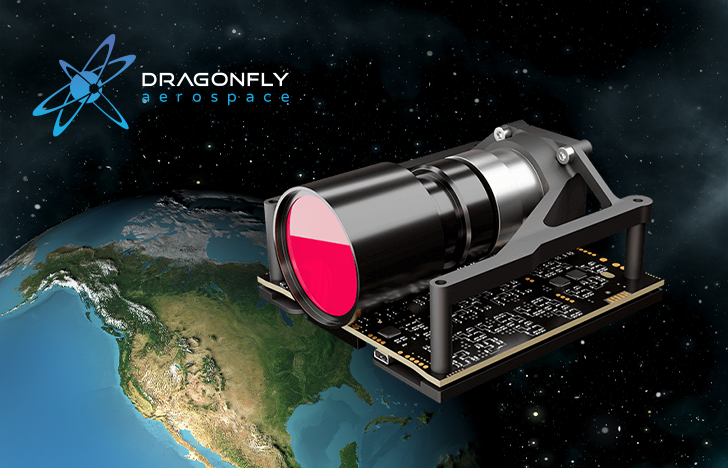
On November 24, 2021, NASA’s mission to test the Earth’s defense technology against potential asteroid hazards was launched on the SpaceX Falcon 9 rocket. We are pleased to announce that DART’s companion, the LICIACube satellite, is equipped with the Dragonfly Aerospace product Gecko, a high-performance satellite imager.
On November 24, 2021, NASA’s mission to test Earth’s defense technology against potential asteroid collisions was launched from the Vandenberg Space Force base in California.
The mission is called DART – Double Asteroid Redirection Test.
The spacecraft was launched aboard a SpaceX Falcon 9 launch vehicle.
We are delighted to share with you that the companion of the DART spacecraft, the LICIACube satellite, is equipped with the Dragonfly Aerospace Gecko satellite imager, a high-performance camera system for CubeSats in a compact design.
And also how it was renamed specially for this mission — Luke.
Here we should note that another cubesat imager on LICIACube is named Leia. So that is a nice easter egg from NASA.
What is the purpose of the mission?
DART’s mission is to test the Earth’s defenses against large asteroids by redirecting potentially dangerous space objects by kinetic impact.
The main goal of DART is to slightly change the movement of asteroids and enable ground-based telescopes to accurately measure the amount of orbital displacement.
How will the mission proceed?
After 10 months of travel outside of Earth’s orbit, the DART spacecraft will reach its destination, a binary asteroid system consisting of Didymos and Dimorphos, between September 26 and October 1, 2022.
Then, thanks to the targeting of the Didymos Reconnaissance and Asteroid Camera for Optical navigation (DRACO) on board, the DART will slam into Dimorphos at the speed of about 6 kilometers per second.
It is estimated that the kinetic impact will shorten the orbit of Dimorphos around Didymos by several minutes.
The spacecraft will be destroyed in the collision.
The companion of the DART, LICIACube, is a ride-along small satellite built by the Italian Space Agency. It will detach from the spacecraft before impact to observe the collision.
Since the event will be very fast-paced, the fixation time will run in minutes.
Therefore, the speed and quality of recording will be especially important here. Dragonfly Aerospace`s satellite camera with large high-speed data storage is exactly capable of providing high frame rate video and colourful snapshot images.
Why is the mission important?
The DART mission will be followed by the European Space Agency’s HERA mission in 2027, which will study the altered Didymos system and Dimorphos moon. Data from these missions will be used in work to deflect future asteroids using the kinetic impact method, one of several methods proposed to prevent any potentially catastrophic asteroid collisions similar to the one that ended the dinosaurs 65 million years ago.
